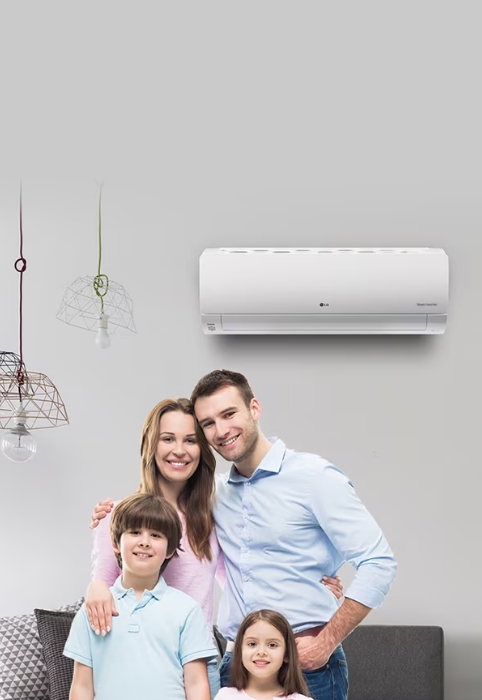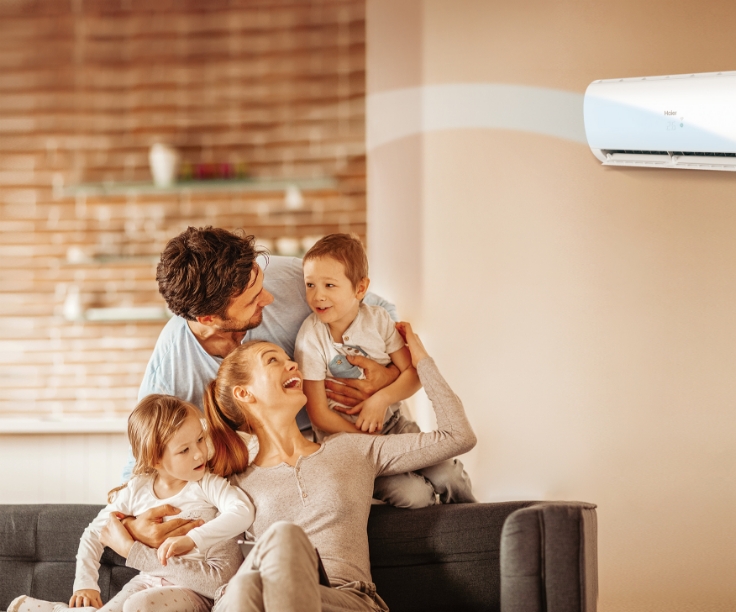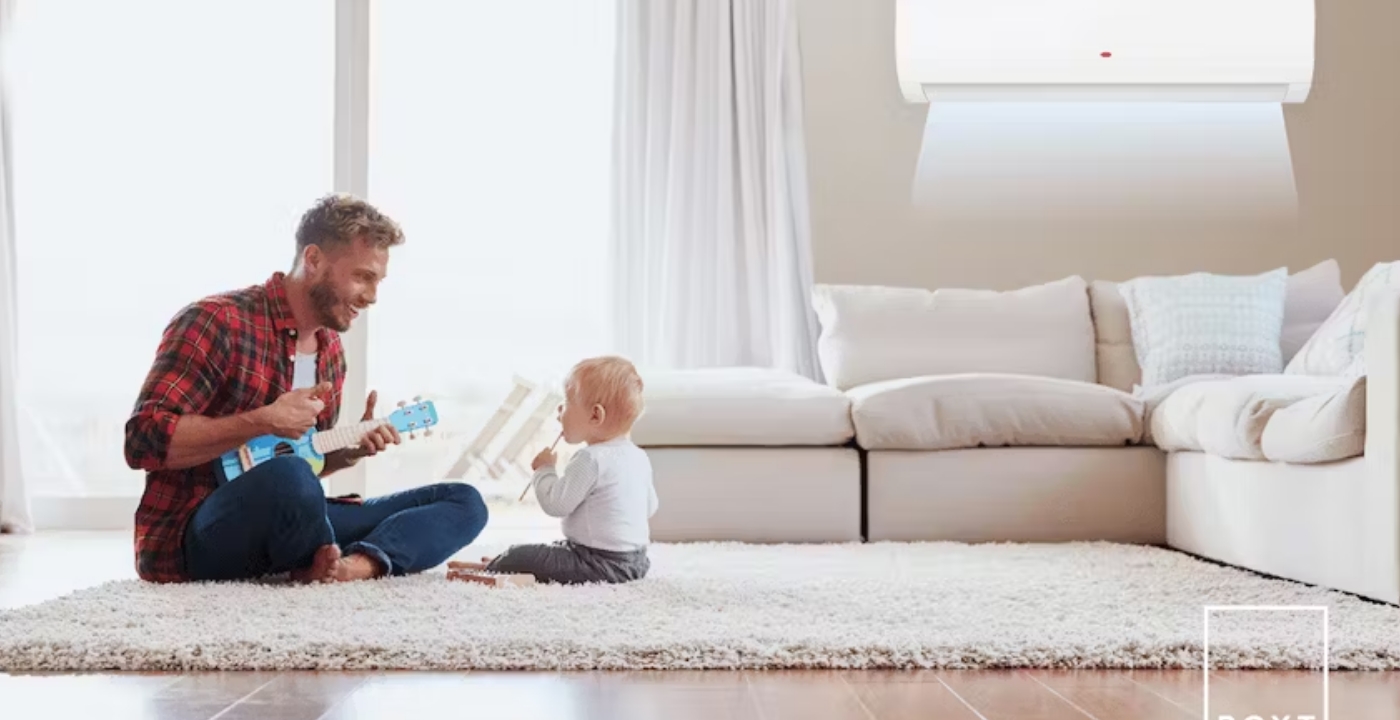Can I install a split system air conditioner myself and should I
Installing a split system air conditioner—like any major appliance—should always be handled by a licensed professional.
This is especially important when the job involves cabling, electrical work, safety switches, or any components that affect performance and warranty.
In today’s DIY world, it can be tempting to install split system aircon yourself, especially for smaller units.
However, unless you’re a certified installer with the right licenses and experience, DIY installation poses serious risks.
Professionals know how to correctly install copper piping, connect safety switches, and safely handle refrigerants.
To protect your investment and ensure efficiency, it’s always best to leave installation to qualified experts.
It’s important to be aware that while installing your own split system might save you in the short term, it might cost you in the long term with servicing, re-install and voiding of your warranty if the installation is undertaken without a licence, so be aware of the risks involved before you undertake installation. In this article, we explore the split system air conditioning system features, what’s involved in a split system installation, what a professional installer provides during installation and long term maintenance to be aware of for your system.

blonde handywoman cleaning fixing air conditioning system| split system air conditioner DIY
Split System Air Conditioning Features
Split system air conditioners are leading the way in home climate control for a variety of great reasons.
They’re easy to install, simple to maintain, and more affordable than ducted systems—making them a go-to choice for many.
Both homeowners and landlords love them for their reliability, efficiency, and ability to create a comfortable indoor environment year-round.
Easy and Fast Installation
One of the biggest advantages is how quick and straightforward it is to install split system aircon.
A licensed technician can complete the job in just one day with minimal disruption to your home.
The technician mounts the indoor unit to a wall and places the outdoor compressor in a suitable external location.
They connect both units with copper piping and install a safety switch for maintenance and compliance.
More Affordable Than Ducted Systems
Split systems offer a cost-effective alternative to ducted air conditioning—especially for smaller homes, units, or tight budgets.
They’re ideal for living rooms, kitchens, or open-plan spaces that don’t require full-property heating or cooling.
In many cases, installing one or two split systems is cheaper than a full ducted setup and requires less construction work.
Perfect for Heating or Cooling One Room
Split systems, in particular, are an excellent choice when you only need to control the climate in a single room or area.
For example, whether it’s a waiting room in your business or a master bedroom in your home, these systems perform efficiently.
They allow for targeted heating and cooling without wasting energy in unused spaces.
Sleek and Space-Saving Design
Split system units feature a modern, wall-mounted design that blends effortlessly with your interior décor.
Unlike bulky window or portable units, they sit high on the wall and remain largely out of sight.
They offer climate control without taking up valuable floor or window space.
Low Maintenance and Easy to Clean
Maintaining a split system is simple and convenient for most property owners.
You can easily remove and clean the air filters to keep air flowing clean and fresh.
Although professional servicing is recommended occasionally, basic upkeep helps maintain efficiency and air quality over time.
What’s involved in a split system installation
The installation process is handled by a trained and licensed professional known as an HVAC installer—Heating, Ventilation, and Air Conditioning expert.
These professionals are highly skilled in all aspects of air conditioning and specialise in installing, servicing, and maintaining various systems.
HVAC technicians regularly install split system aircon units in homes, apartments, and offices of all sizes across Australia.
Inclusions in your split system air conditioning system installation may be:
– Removal of any old split system unit from your property
– Adding a concrete pad under your outdoor unit (if required)
– Installing your wall unit inside your property
– Adding in approved circuit breaker (safety switch) and electrical wiring
– Installing Australian standard refrigeration copper pipe between the indoor and outdoor unit
– Installing insulation on all refrigerant pipes
– Removal of rubbish from site
– Testing of the system
– Providing owner with a comprehensive overview of how to use the system
If you are going to engage a professional HVAC installer it is always wise to engage an individual from a reputable company with public liability insurance and an individual with the best equipment. Usually, HVAC installers will be available via your air conditioning retailer and will come recommended for your peace of mind.
HVAC tasks involved in a split system installation
While you might think you can do it yourself, there is a lot of installing a split system air conditioner than meets the eye.
Before you consider whether you should install a split system air conditioner yourself or not, it might be worth considering all of the tasks an HVAC installer can provide to ensure you understand the intricate nature of the installation process.
Jobs for an HVAC installer may include:
– Testing pipe for leaks including using a pressure gauge
– Testing of electrical circuits to ensure proper functioning
– Repair or replacement of defective equipment or wiring
– Servicing the heating or cooling components
– Replacing defective parts
– Undertaking complete analysis of heating and cooling system to identify problems
– Changing filters, clearing ducts and refilling toxic refrigerants
– Installing and updating thermostats
– Ensure all work complies with Australian standards
– Ensure all work complies with warranty
– Install auxiliary components including blowers, dampers, flues and stokers
– Install electrical wiring
– Document installation for warranty
– Ensure system compliance
– Adjust system controls
– Drill into walls and floors
– Bend copper piping
There are plenty of tasks involved in installing a split system air conditioning unit as shown above and it is important that you engage the services of a professional HVAC installer to ensure all of the installation, repairs and maintenance is undertaken correctly and to manufacturers standards.
Should You Install a Split System Air Conditioner?
The short answer is no—you should never install split system aircon without a licensed professional.
Unless you’re fully certified, installation should always be handled by qualified technicians to ensure safety, efficiency, and warranty protection.
Why DIY Isn’t the Right Choice
Some home appliances are suitable for DIY installation, but split system air conditioners are not among them.
These systems must be installed correctly to perform at their best and comply with local regulations.
Incorrect installation can result in poor airflow, inefficient cooling or heating, and even system damage.
Get Expert Advice Before You Buy
It’s crucial to consult an air conditioning specialist before purchasing your unit.
They’ll assess your space and recommend a system that matches your home’s size, layout, and energy needs.
Many buyers make the mistake of choosing a unit based on price and features—without considering the area it must cool or heat.
Why Proper Sizing Matters
Split systems are designed to efficiently heat or cool specific floor areas.
If your unit is too small or too large for the space, it won’t operate efficiently or deliver consistent comfort.
That’s why an onsite quote is essential before you install split system aircon.
Split System Air Conditioner Size Guide
Use this basic guide to estimate the capacity needed for your room:
2.8kW – Suitable for rooms up to 20 sqm
4.2kW – Ideal for areas around 30 sqm
5.6kW – Great for rooms around 40 sqm
7.0kW – Works for larger spaces up to 50 sqm
8.4kW – Best for large rooms around 60 sqm
Other Factors to Consider
Room size isn’t the only factor when selecting your unit.
You should also take into account:
Ceiling height
Insulation quality
Sunlight exposure and window placement
Local climate conditions
An air conditioning expert can walk you through all these variables to ensure you choose the perfect unit.
Why Choose Rite Price Heating & Cooling?
If you’re looking to install or purchase split system aircon in Adelaide, Rite Price Heating & Cooling has you covered.
We offer a wide range of split systems tailored for homes and offices of all sizes and layouts.
Our highly experienced HVAC technicians provide full installation, expert advice, and ongoing servicing.
We take pride in getting the job done right the first time—with reliable systems that deliver year-round comfort.
Book a Free Quote Today
Whether you need a system for summer, winter, or both, we’ll recommend the best split system for your needs.
Rite Price Heating & Cooling delivers quality, affordability, and professional service from quote to installation and beyond.
Contact us today to learn more or schedule your free onsite quote.








